

Scotland

Glasgow
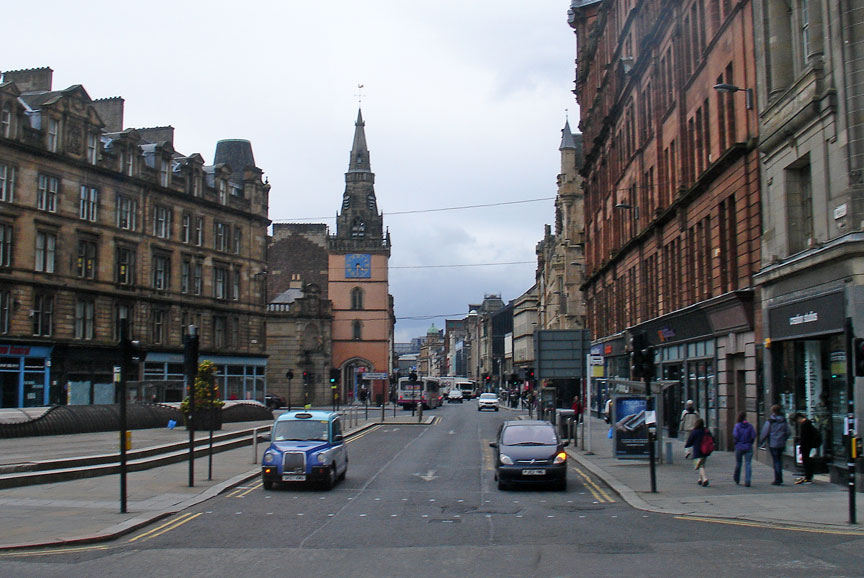
![]()

Edinburgh on a wet and cloudy day
Edinburgh, city, capital of Scotland, on the southern shore of the Firth of Forth. Edinburgh is the second largest city in Scotland, after the industrial center of Glasgow. It is, however, Scotland's financial, cultural, educational, and service-industry hub. Among the city's manufactures are paper, whisky, electrical and electronic equipment, food products, and chemicals. The printing and publishing industry was well established here by the 16th century. Edinburgh's port, at the communities of Leith and Granton, is a major service point for vessels associated with the North Sea petroleum industry. The principal imports are petroleum products, grain, ores, and wood; exports include whisky, steel, and fertilizer. The city is also one of Britainís major tourist centers.
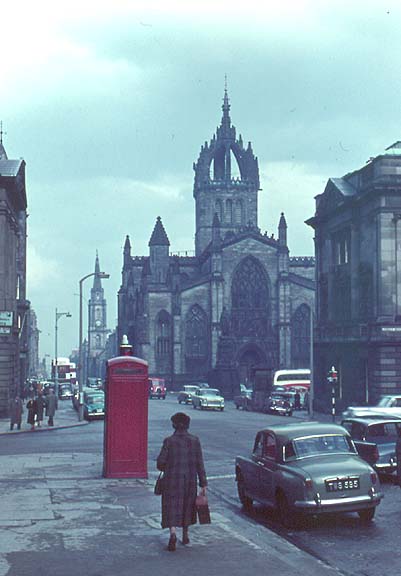
St. Giles
Edinburgh's central dominating landmark is Edinburgh Castle, rising on sheer cliffs above the city. Located here is the 11th-century Chapel of Saint Margaret, the city's oldest structure. The Castle Rock is connected to the 16th-century royal Scottish residence of Holyrood Palace by a road known as the Royal Mile, the main thoroughfare of the Old Town district of the city. Other notable buildings in Old Town include Saint Giles, the National Church of Scotland (largely 15th century); the Parliament House, seat of the Scottish Parliament from its completion in 1639 until 1707; and the house of the 16th-century Protestant reformer John Knox. To the north of this district is New Town, which was developed in the late 18th century and contains many fine buildings designed by the Scottish architect Robert Adam. Separating the two districts is Princes Street Gardens, occupying the bed of a loch that was drained in 1816.
![]()

new bridge being constructed (Forth
Road Bridge) over the Firth of Forth
(classic old bridge in the background)
Among Edinburgh's cultural institutions are the National Gallery of Scotland (1859), the Scottish National Portrait Gallery (1882), the Royal Scottish Museum (1854), and museums of modern art and Scottish history. The Edinburgh International Festival, held here annually since 1947, is a world-renowned arts festival. The University of Edinburgh (1583) is especially noted for its schools of medicine and law. Other educational institutions include Heriot-Watt University (1821), Edinburgh College of Art (1907), and colleges of architecture, technology, education, and theology.

entrance to Sterling Castle
Castle Rock was occupied by the Picts about the 6th century AD. In the 11th century Malcolm III, king of Scotland, had his castle here, and his wife, Saint Margaret, built a small church. King Robert Bruce granted Edinburgh a charter in 1329. In 1437 the town became the national capital following the murder of King James I at Perth, the former capital. Edinburgh lost much of its commercial and administrative importance in 1603 when James VI became James I, king of England, and departed for London. By the Act of Union with England in 1707, the Scottish Parliament was dissolved and Scotland was governed by the British Parliament. In 1999 the Scottish Parliament was recalled after 292 years as the result of the Scotland Act 1998.

join the Scottish Highlanders
Edinburgh's expansion beyond its medieval boundaries to New Town was planned by the town council in 1767. During the 18th and 19th centuries the city flourished as a cultural center. It was the home of writers Robert Burns, James Boswell, and Sir Walter Scott and the philosophers Adam Smith and David Hume. The city's boundaries were expanded considerably in 1856 (when New Town was absorbed), 1900, and 1920. Before 1975 Edinburgh was the county town of the former county of Midlothian. In the 1996 reorganization of local government, the City of Edinburgh became a unitary authority. Population (1996 estimate) 448,850.
Text from Microsoft Encarta

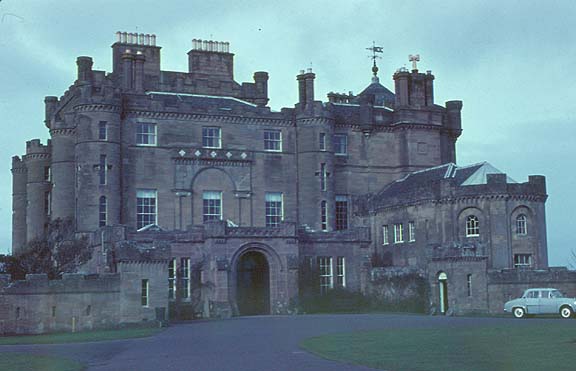
Country house Eisenhower used as a Headquarters
![]()
Loch Ness
Ness, Loch, long, narrow lake, northern Scotland, forming part of the Caledonian Canal. It extends in a northeastern direction for 37 km (23 mi) from Fort Augustus to a point near the city of Inverness. The average width of the lake is about 2 km (about 1 mi), and the greatest depth is about 230 m (about 754 ft). It is drained by the Ness River into Moray Firth. The lake is reportedly the home of the so-called Loch Ness monster, but its existence has never been proven.
Text from Microsoft Encarta
![]()
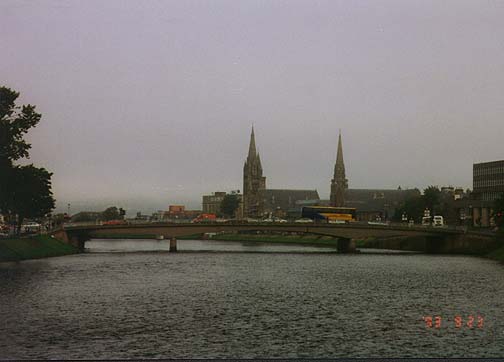
Inverness
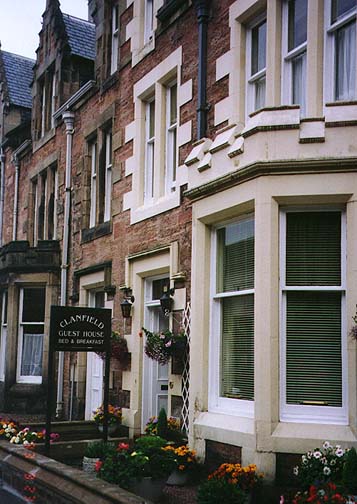
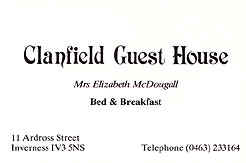
my Bed and Breakfast

highlands as seen from train
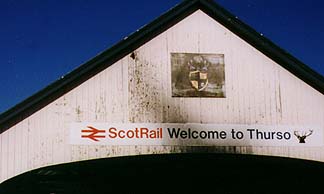

ScotRail
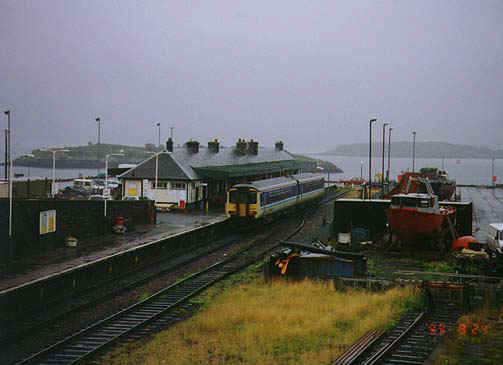
end of line at KYLE of LOCHALSH (connected to SKYE ferry)
![]()
Until 1995 you had a choice of three ferry routes to Skye. The CalMac ferry from Mallaig to Armadale remains a firm favourite, while the Glenelg to Kylerhea ferry continues to provide a March to October alternative for those wishing to explore a fascinating corner of the Highlands. But in October 1995 the ferries from Kyle of Lochalsh to Kyleakin were withdrawn from service, and traffic instead began to use the new Skye Bridge.
![]()
Booked.net - hotels in Edinburgh
![]()
![]()